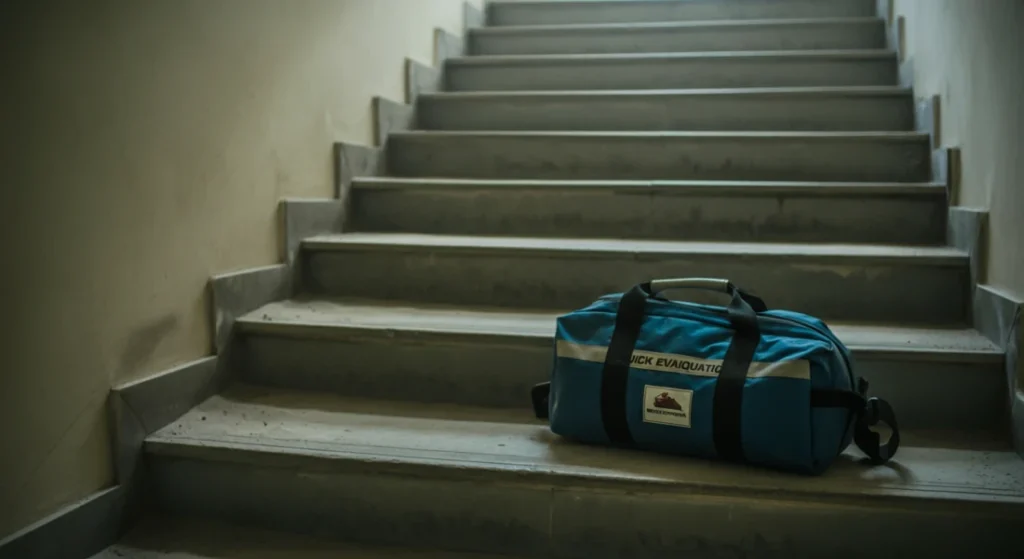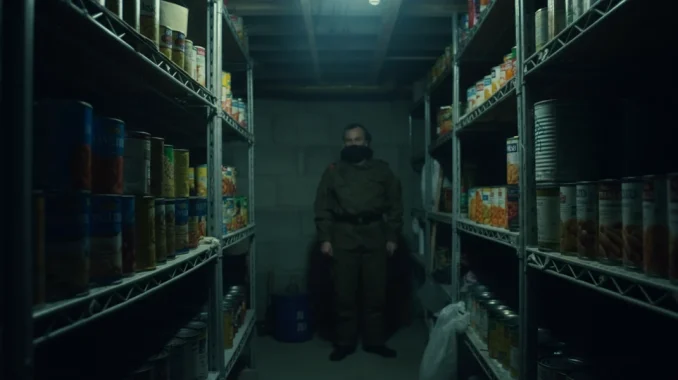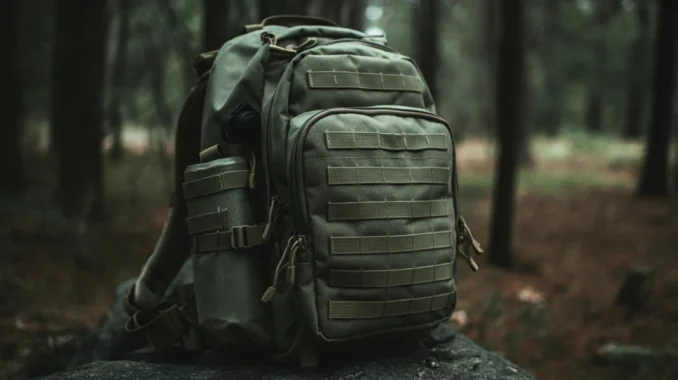In times of war, civil unrest, or other unexpected conflicts, being ready to evacuate at a moment’s notice can mean the difference between life and death. An emergency go-bag (also known as a bug-out bag) is a pre-packed survival kit that contains everything you need to stay safe, mobile, and self-sufficient for at least 72 hours while evacuating to safety.
If you live in Europe, recent conflicts and political instability have shown that emergencies can arise suddenly. Wars, bombings, government crackdowns, or border closures may force you to leave home with little warning. This guide will help you prepare a well-thought-out go-bag that ensures you can survive and adapt to any situation.

Step 1: Choosing the Right Bag
Your go-bag needs to be lightweight, durable, and comfortable to carry for long distances. Consider these options:
- Tactical backpack – Strong, water-resistant, and has multiple compartments.
- Hiking backpack – Designed for comfort and long-distance travel.
- Military-style duffel bag – Useful if you plan to evacuate by vehicle.
- Dry bag – Waterproof, essential for flood-prone areas.
What NOT to do:
- Avoid flashy or brightly colored bags—you don’t want to stand out in a crisis.
- Don’t choose an oversized bag—you need to stay mobile.
- Avoid bags with weak zippers or straps—cheap materials may fail under stress.
Step 2: Essential Items for Your Go-Bag
1. Identification & Important Documents
In war or evacuation situations, losing your identity papers can be a major risk. Pack the following in a waterproof bag:
- Passport, national ID card, driver’s license.
- Birth certificates and proof of residency.
- Copies of medical records and prescriptions.
- Emergency contact list (written on paper in case phones fail).
- Cash in small denominations and different currencies (euros, dollars, local currency).
2. Water & Hydration
- 2-3 liters of bottled water.
- Water purification tablets or a portable water filter (like a LifeStraw).
- Collapsible water container for refilling.
3. Food & Nutrition
- High-calorie energy bars (compact and long-lasting).
- Dried nuts, jerky, and sealed food pouches.
- Ready-to-eat meals (MREs) or canned food with a pull-tab.
- Metal cup or mess kit for cooking.
- Lightweight spork or cutlery.
4. Clothing & Protection
Choose clothing for all-weather survival:
- Lightweight, moisture-wicking t-shirts.
- Warm fleece or thermal base layers.
- Waterproof jacket.
- Durable pants (avoid jeans, they take too long to dry).
- Extra underwear and socks (wool is best).
- Hat, gloves, and scarf (for cold conditions).
- Sturdy, comfortable walking shoes or boots.
5. Shelter & Warmth
- Compact emergency sleeping bag or bivvy sack.
- Lightweight tent or tarp (for quick shelter setup).
- Thermal blanket (retains body heat and is compact).
- Paracord and duct tape (useful for securing shelters, repairing gear).
6. First Aid & Medical Supplies
War and conflict zones come with increased risks of injury. Your go-bag should have:
- First aid kit with bandages, gauze, antiseptic wipes.
- Trauma bandages (for serious bleeding).
- Pain relievers (ibuprofen, aspirin, or paracetamol).
- Antibiotics (if available, consult a doctor beforehand).
- Prescription medications (at least a 7-day supply).
- Tourniquet (for severe bleeding).
- Eye drops (smoke and dust irritation is common in war zones).
- Surgical gloves and masks.
7. Light & Communication
- Flashlight or headlamp (with extra batteries).
- Solar-powered or hand-crank radio (to receive news updates if power fails).
- Power bank (to charge your phone in case of outages).
- Emergency whistle (for signaling for help).
- Small mirror (for signaling rescuers or checking injuries).
8. Self-Defense & Tools
- Multitool (includes knife, screwdriver, scissors, etc.).
- Pepper spray (if legal in your country).
- Heavy-duty zip ties (useful for securing items or improvising solutions).
- Fire starter kit (waterproof matches, lighter, or fire starter rods).
- Small crowbar (can help with forced entry into safe locations).
9. Hygiene & Sanitation
- Toothbrush, toothpaste, and deodorant.
- Soap, wet wipes, and hand sanitizer.
- Compact towel.
- Toilet paper or tissues.
- Feminine hygiene products (for those who need them).
- Small shovel (for burying waste if necessary).
10. Maps & Navigation
- Physical maps of your city, region, and possible escape routes.
- Compass.
- Pre-planned meeting points with family or friends.
- Written addresses of embassies or safe zones.
Step 3: What NOT to Pack
- Too many heavy items – You need mobility, not excess weight.
- Large weapons – Avoid anything that might make you a target.
- Unnecessary electronics – You likely won’t have access to Wi-Fi or entertainment.
- Too many clothes – Focus on layering instead of bulk.
- Perishable foods – Stick to long-lasting, non-perishable items.
Step 4: Preparing & Using Your Go-Bag Effectively
- Keep it in a strategic location – Near your door, in your car, or somewhere easy to grab quickly.
- Regularly check and update your supplies – Food, medicine, and batteries expire.
- Practice carrying it – If it’s too heavy, reassess what you need.
- Know multiple evacuation routes – Plan where you will go if you need to flee.
- Have a backup plan – If you can’t take the main bag, have a smaller emergency pouch with essentials like ID, cash, and medicine.
Conclusion: Be Ready Before You Need to Be
A well-packed go-bag is your lifeline in an emergency. Whether fleeing war, civil unrest, or another crisis, having a prepared, lightweight, and essential kit will increase your survival chances and reduce panic.
By following this guide, you will:
- Have all essential supplies ready for fast evacuation.
- Remain mobile and avoid unnecessary burden.
- Be prepared for different crisis scenarios.
- Increase your chances of reaching safety.
Don’t wait until it’s too late. Prepare your emergency go-bag today, keep it accessible, and ensure that you and your family are ready for anything.




